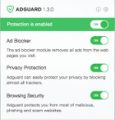What is InitialDevice
InitialDevice is supposed to be an app that will improve the browsing experience, but according to security specialists, this application is adware. Adware is a form of ‘advertising supported’ software which tries to generate profit by redirecting you to unwanted web-sites or online advertising. It has different ways of earning profit including displaying up adverts on the browser forcefully. Most of adware software gets installed when you’re downloading free software or browser extensions.
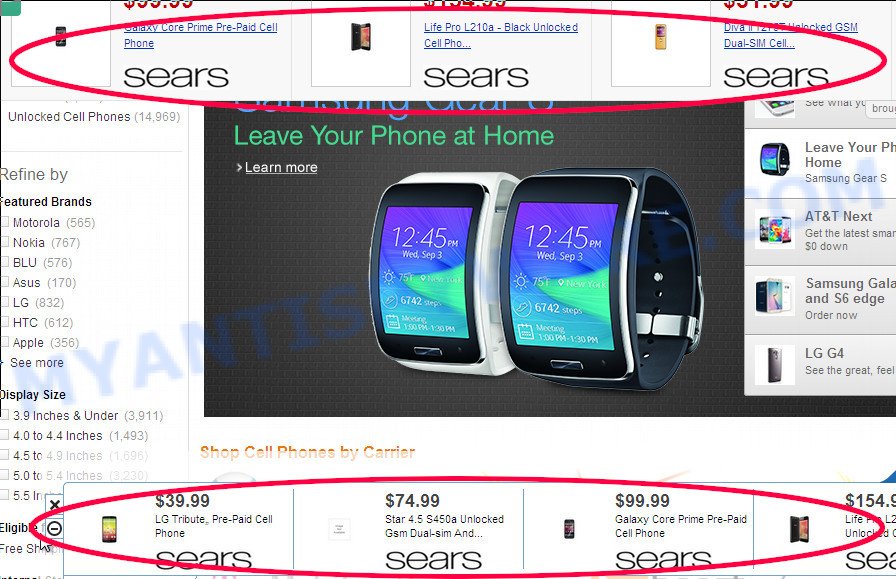
Unwanted ads
Another problem is that the InitialDevice adware can gather lots of marketing-type data about you (your ip address, what is a website you are viewing now, what you are looking for on the Net, which links you are clicking), which can later transfer to third parties.
By following tutorial below it is easy to scan and delete adware from Chrome, Safari and Firefox and your MAC. Learn how to delete InitialDevice and other unwanted applications, as well as how to run a full Apple Mac virus scan.
How does InitialDevice get on your MAC system
Adware software actively distributed with free programs, together with the installation package of these programs. Therefore, it’s very important, when installing an unknown application even downloaded from well-known or big hosting site, read the Terms of use and the Software license, as well as to choose the Manual, Advanced or Custom installation type. In this method, you can disable the installation of additional modules and software and protect your MAC from adware.
Threat Summary
| Name | InitialDevice, InitialDevice 1.0 app |
| Type | adware software, potentially unwanted application (PUA), popup advertisements, pop-ups, popup virus |
| Symptoms |
|
| Removal | InitialDevice removal guide |
How to remove InitialDevice from Mac device
Fortunately, we’ve an effective method that will help you manually or/and automatically get rid of InitialDevice from your browser and bring your internet browser settings, including default search engine, home page and new tab, back to normal. Below you will find a removal steps with all the steps you may need to successfully remove adware and its traces. Read it once, after doing so, please bookmark this page (or open it on your smartphone) as you may need to exit your internet browser or restart your Apple Mac.
To remove InitialDevice, follow the steps below:
- Remove unwanted profiles on Mac device
- Delete InitialDevice related applications through the Finder
- Remove InitialDevice related files and folders
- Scan your Mac with MalwareBytes
- Remove InitialDevice from Safari, Chrome, Firefox
- How to stay safe online
- To sum up
Remove unwanted profiles on Mac device
InitialDevice can make changes to the Mac system such as malicious changes to browser settings, and the addition of malicious system profiles. You need to check the system preferences, find and remove malicious profiles and ensure your settings are as you expect.
Click the System Preferences icon ( ![]() ) in the Dock, or choose Apple menu (
) in the Dock, or choose Apple menu ( ![]() ) > System Preferences.
) > System Preferences.
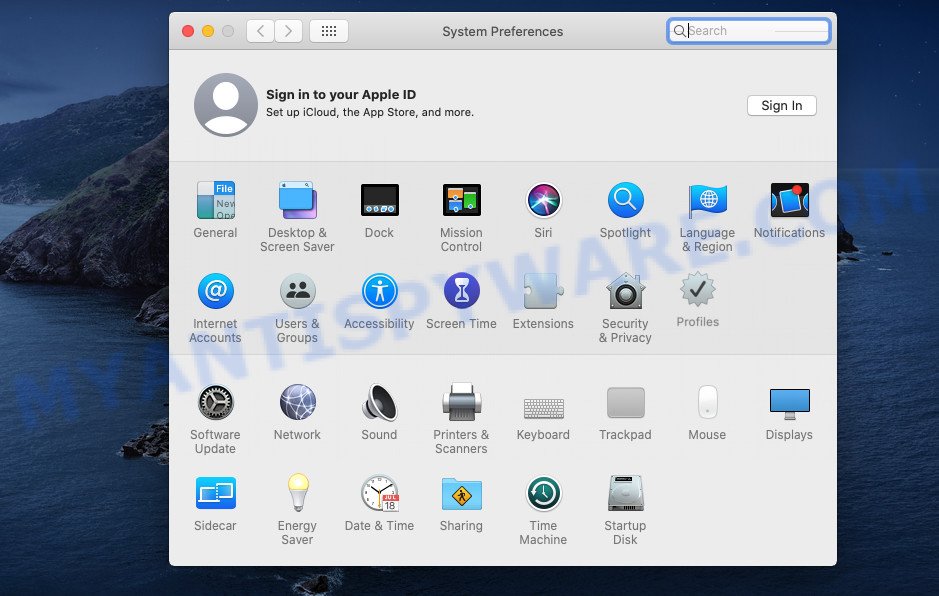
In System Preferences, click Profiles, then select a profile related to InitialDevice.
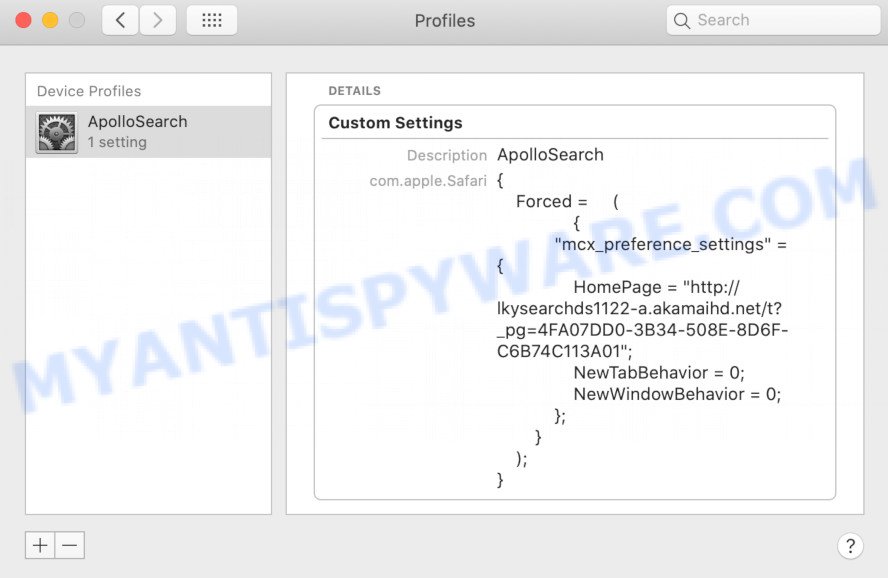
Click the minus button ( – ) located at the bottom-left of the Profiles screen to remove the profile.
Note: if you do not see Profiles in the System Preferences, that means there are no profiles installed on your Mac computer, which is normal.
Delete InitialDevice related applications through the Finder
One of the first things to attempt for removal of adware is to check your Mac device installed applications screen and look for unwanted and suspicious programs. If there are any software you do not recognize or are no longer using, you should delete them. If that doesn’t work, then you may need to use malware removal tool like MalwareBytes.
Open Finder and click “Applications”.
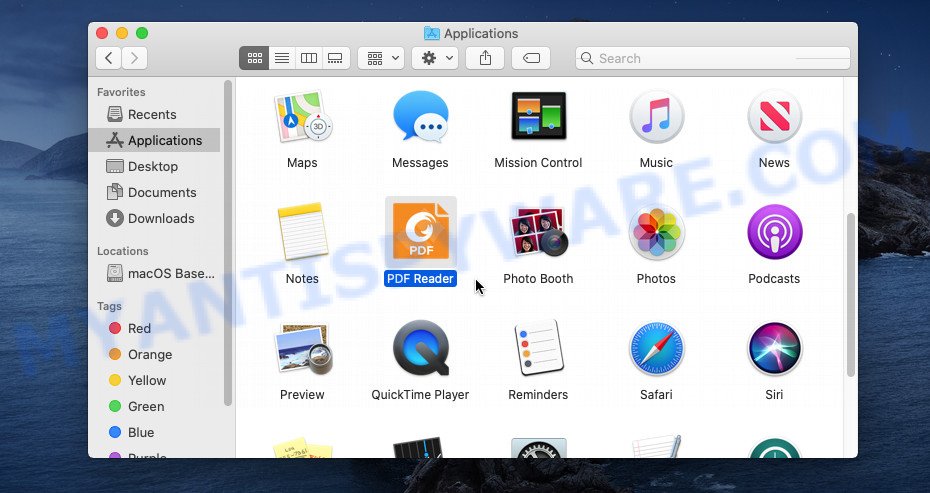
It will display a list of all apps installed on your Apple Mac. Scroll through the all list, and uninstall any questionable and unknown apps. Right click to dubious application and choose “Move to Trash”. Another solution is drag the program from the Applications folder to the Trash.
Most important, scroll through the all list, and move to trash any unknown applications. Don’t forget, choose Finder -> Empty Trash.
Remove InitialDevice related files and folders
Now you need to try to find InitialDevice related files and folders, and then delete them manually. You need to look for these files in certain directories. To quickly open them, we recommend using the “Go to Folder…” command.
Click on the Finder icon. From the menu bar, select Go and click “Go to Folder…”. As a result, a small window opens that allows you to quickly open a specific directory.

Check for InitialDevice generated files in the /Library/LaunchAgents folder

In the “Go to Folder…” window, type the following text and press Go:
/Library/LaunchAgents
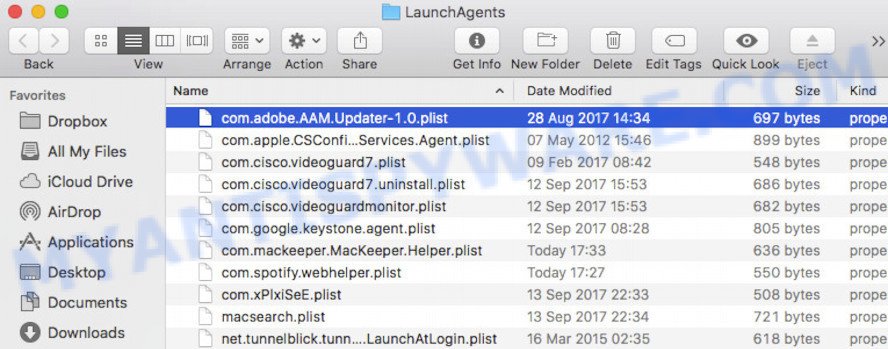
This will open the contents of the “/Library/LaunchAgents” folder. Look carefully at it and pay special attention to recently created files, as well as files that have a suspicious name. Move all suspicious files to the Trash. A few examples of files: installapp.plist, com.machelper.plist, macsearch.plist, InitialDevice.plist and search.plist. Most often, PUPs, adware and browser hijackers create several files with similar names.
Check for InitialDevice generated files in the /Library/Application Support folder

In the “Go to Folder…” window, type the following text and press Go:
/Library/Application Support
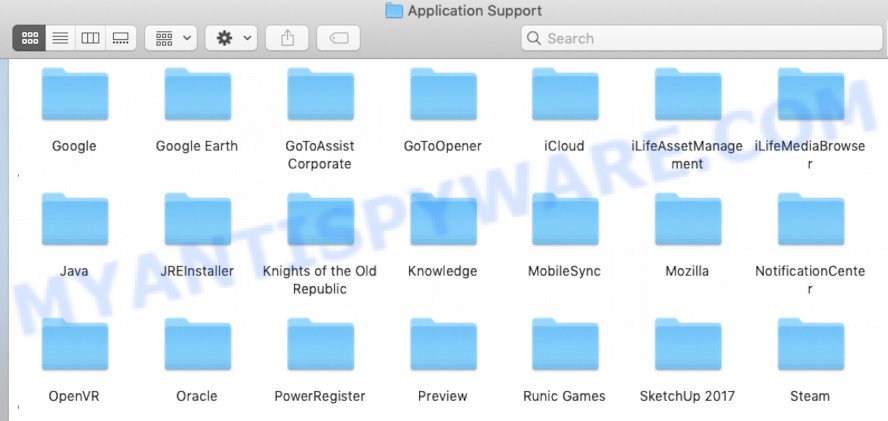
This will open the contents of the “Application Support” folder. Look carefully at its contents, pay special attention to recently added/changed folder. Move all suspicious folders to the Trash.
Check for InitialDevice generated files in the “~/Library/LaunchAgents” folder

In the “Go to Folder…” window, type the following text and press Go:
~/Library/LaunchAgents

Proceed in the same way as with the “/Library/LaunchAgents” and “/Library/Application Support” folders. Look for suspicious and recently added files. Move all suspicious files to the Trash.
Check for InitialDevice generated files in the /Library/LaunchDaemons folder
In the “Go to Folder…” window, type the following text and press Go:
/Library/LaunchDaemons

Carefully browse the entire list of files and pay special attention to recently created files, as well as files that have a suspicious name. Move all suspicious files to the Trash. A few examples of files to be deleted: com.search.plist, com.macsearch.plist, com.machelper.plist, com.InitialDevice.plist and com.installapp.plist. In most cases, adware, browser hijackers and PUPs create several files with similar names.
Scan your Mac with MalwareBytes
Manual InitialDevice removal requires some computer skills. Some files and system entries that created by the adware can be not completely removed. We recommend that run MalwareBytes Anti-Malware to scan the Mac device. Moreover, this application will help you to delete toolbars, browser hijackers, adware and potentially unwanted programs that your MAC system can be affected too.
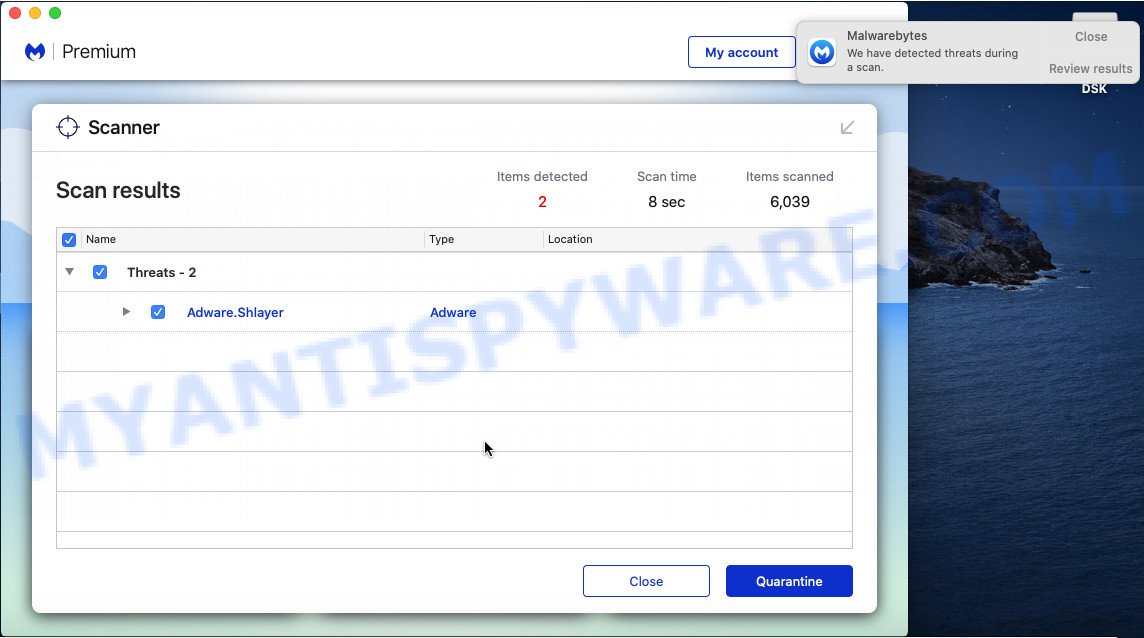
Visit the page linked below to download MalwareBytes Free.
21008 downloads
Author: Malwarebytes
Category: Security tools
Update: September 10, 2020
Once the download is finished, run it and follow the prompts. Click the “Scan” button for checking your computer for the InitialDevice . A scan can take anywhere from 10 to 30 minutes, depending on the number of files on your MAC and the speed of your machine. While the MalwareBytes is scanning, you can see count of objects it has identified either as being malware. Next, you need to click the “Quarantine” button.
The MalwareBytes is a free program that you can use to delete all detected folders, files, malicious services and so on.
Remove InitialDevice from Safari, Chrome, Firefox
If you have ‘InitialDevice ‘ removal problem, then remove unwanted addons can help you. In the steps below we’ll show you the solution to delete harmful addons without reinstall. This will also help to delete InitialDevice from your web-browser.
You can also try to remove InitialDevice by reset Chrome settings. |
If you are still experiencing issues with InitialDevice adware software removal, you need to reset Firefox browser. |
|
How to stay safe online
Use ad-blocking program such as AdGuard in order to stop advertisements, malvertisements, pop-ups and online trackers, avoid having to install harmful and adware browser plug-ins and add-ons which affect your computer performance and impact your MAC OS security. Surf the Internet anonymously and stay safe online!
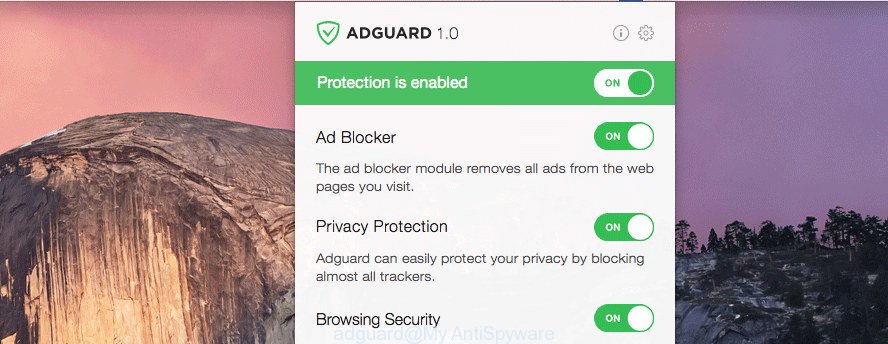
Click the following link to download AdGuard.
3779 downloads
Author: © Adguard
Category: Security tools
Update: January 17, 2018
Once the download is finished, run the downloaded file. The “Setup Wizard” window will show up on the computer screen.
Follow the prompts. AdGuard will then be installed. A window will show up asking you to confirm that you want to see a quick instructions. Press “Skip” button to close the window and use the default settings, or press “Get Started” to see an quick guide which will allow you get to know AdGuard better.
Each time, when you launch your computer, AdGuard will start automatically and stop undesired pop up ads, block malicious and misleading webpages.
To sum up
Once you have complete the step-by-step guide shown above, your MAC should be free from the InitialDevice adware and other malicious software. The Firefox, Safari and Chrome will no longer redirect you to various unwanted web-pages and online ads. Unfortunately, if the instructions does not help you, then you have caught a new adware, and then the best way – ask for help here.

